- Log in
-
- Sydney Overseas Office
- London Overseas Office
- Toronto Overseas Office
- Los Angeles Overseas Office
- New York Overseas Office
- Ulaanbaatar Overseas Office
- Istanbul Overseas Office
- Dubai Overseas Office
- New Delhi Overseas Office
- Manila Overseas Office
- Jakarta Overseas Office
- Hanoi Overseas Office
- Kuala Lumpur Overseas Office
- Singapore Overseas Office
- Bangkok Overseas Office
- Map
- Sydney Overseas Office
- London Overseas Office
- Toronto Overseas Office
- Los Angeles Overseas Office
- New York Overseas Office
- Ulaanbaatar Overseas Office
- Istanbul Overseas Office
- Dubai Overseas Office
- New Delhi Overseas Office
- Manila Overseas Office
- Jakarta Overseas Office
- Hanoi Overseas Office
- Kuala Lumpur Overseas Office
- Singapore Overseas Office
- Bangkok Overseas Office
Travel Highlights
-
-
-
K-Hiking Adventures in Seoul for All Levels
-
06/05/2025
8.4K
-
27
24
-
-
-
-
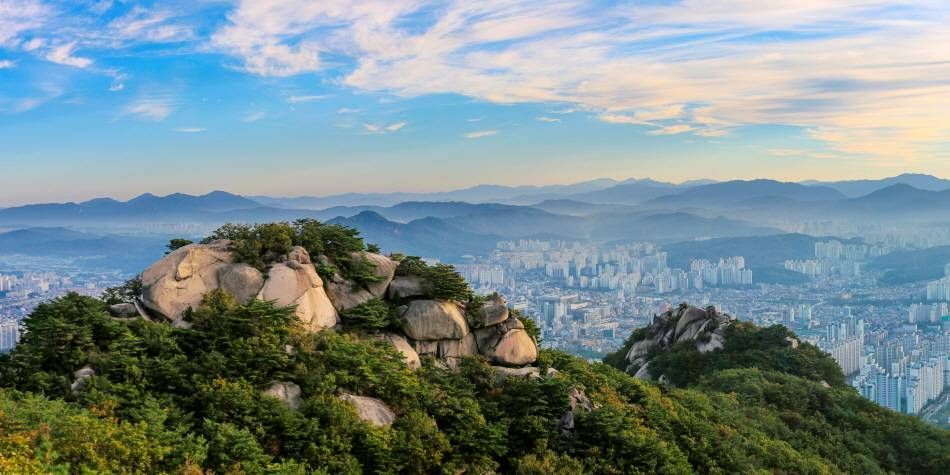
Seoul isn’t just home to millions of people, it’s also home to many mountains both large and small. Everywhere you look, the skyline of Seoul’s tall buildings is backed by undulating mountain ridges. From the peaks of these mountains, you can see the whole of Seoul unfold before you.
The mountains around Seoul have an average height of 410 meters, making them quite low and easy for hikers of all skill levels. The mountains are also the perfect place to enjoy Korea’s changing seasons. Especially in summer, you can enjoy the cool breeze that blows through the shaded valleys. Another attraction of the mountains is how easily accessible they are via Seoul’s extensive public transit system, with most hiking paths starting just a short walk from subway station exits. To enjoy a bird’s-eye-view of Seoul while in peaceful nature, select one of the courses below, available in various difficulty levels.
1. Difficulty level: Easy
Perfect for beginners, these easy-level hiking trails can be completed in under two hours. With gentle slopes and no need for trekking gear, these treks are recommended for those with little hiking experience or families.
| Hanyangdoseong, Seoul City Wall (Naksan Section 114 m): Walk through History
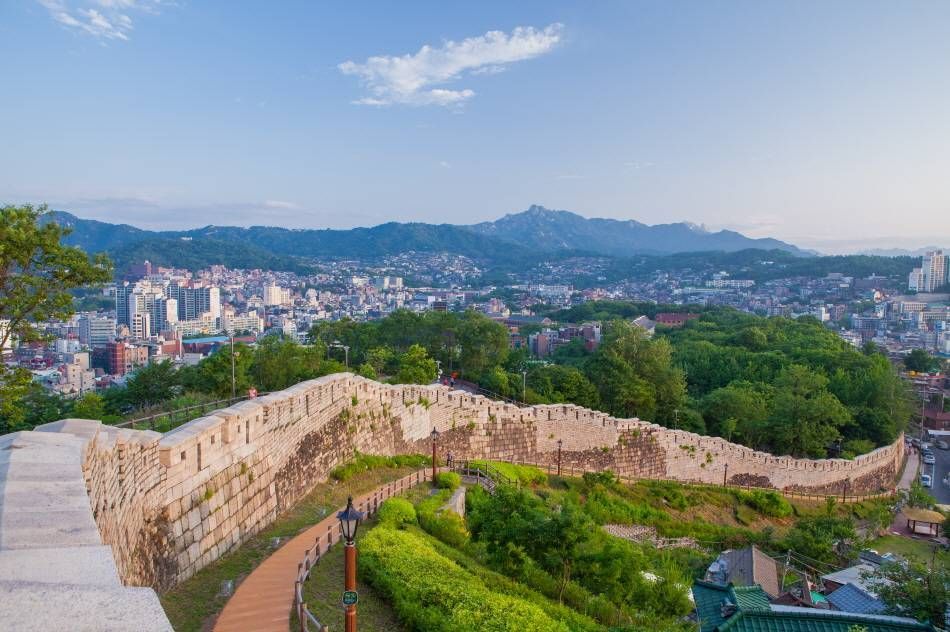
Follow the old city wall along Hansangdoseong (Credit: Getty Images Bank)
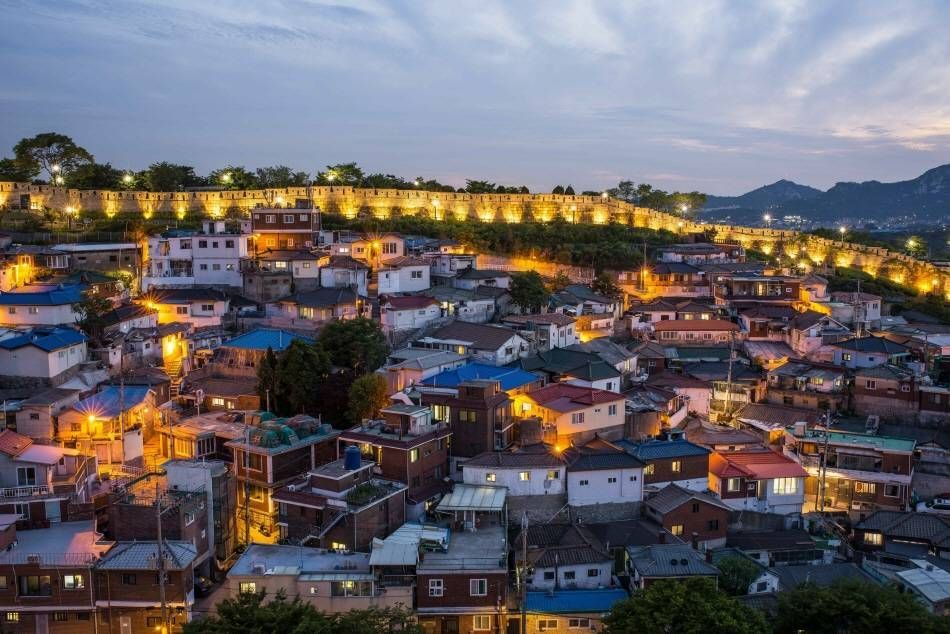
Beautiful nightscape from Naksan Park (Credit: Korea Tourism Organization Photo Korea – Oh Han-sol)
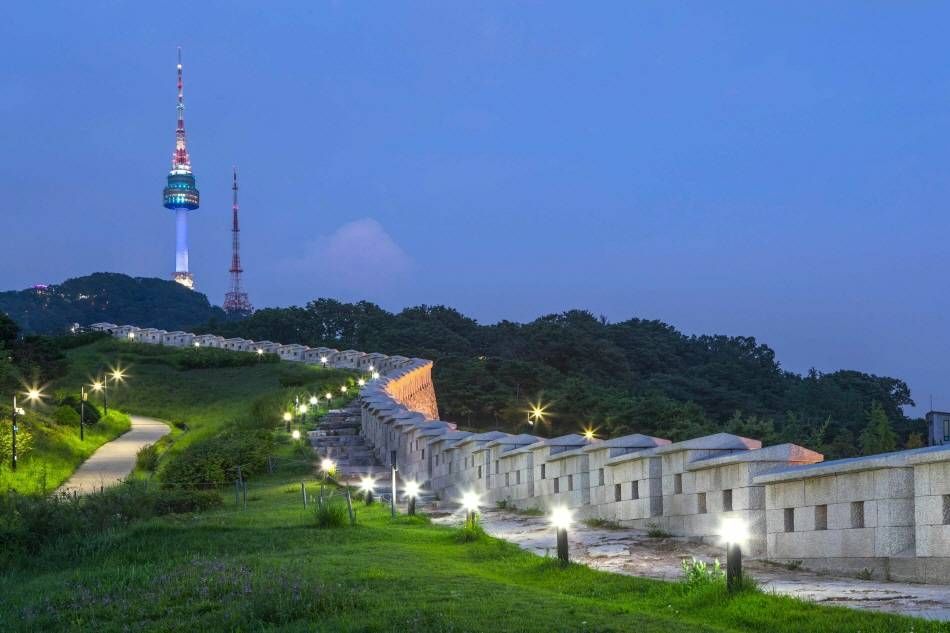
View of Namsan Tower from Namsangongwon-gil (Credit: Korea Tourism Organization Photo Korea – Lee Bumsu)
Hanyangdoseong, the Seoul City Wall, was built in 1396 to protect Hanseong, the then-capital city of Joseon. Currently, the old city wall is located in the middle of Seoul, and is divided into six sections. Among these, the Naksan Section is the easiest course, and offers stunning nightscape views, making it a popular choice. You can receive a commemorative badge if you walk all six sections of Hanyangdoseong and collect stamps at the designated spots.
■ Hanyangdoseong Course
- - Directions: Walk from Hansung Univ. Station (Seoul Subway Line 4), Exit 4
- - Recommended course: Naksan Section (Hyehwamun Gate – Naksan Park – Ehwa Village – Heunginjimun Gate)
- - Required time: 1 hr (Trail distance 2.1 km)
✅ More info on Hanyangdoseong Courses
- ① Sungnyemun Section (1 hr / 1.8 km)
Baekbeom Plaza – Namdaemun Market – Sungnyemun Gate – Site of Donuimun Gate & Kangbuk Samsung Medical Center / Start from Hoehyeon Station (Seoul Subway Line 4), Exit 5 - ② Heunginjimun Section (1 hr / 1.8 km)
Heunginjimun Gate – Dongdaemun History & Culture Park (Previous Site of Dongdaemun Stadium) – Gwanghuimun Gate – Jangchung Gymnasium / Start from Dongdaemun Station (Seoul Subway Line 1, 4), Exit 6 or 7 - ③ Namsan Section (3 hr / 4.2 km)
Jangchung Gymnasium – National Theater of Korea – N Seoul Tower – Namsan Octagonal Pavilion – Baekbeom Plaza / Start from Dongguk Univ. Station (Seoul Subway Line 3), Exit 5 - ④ Baegak Section (3 hr / 4.7 km)
Changuimun Gate – Sukjeongmun Gate – Malbawi Rock Information Center – Waryong Park –Hyehwamun Gate / From Gyeongbukgung Station (Seoul Subway Line 3), Exit 3, take Bus No. 7212, 1020, 7022 to Jahamungogae, Yun Dongju Hill Bus Stop - ⑤ Inwangsan Section (2 hr 30 min / 4 km)
Site of Donuimun Gate – Inwangsan Mountain summit – Yun Dongju Hill – Changuimun Gate / Start from Seodaemun Station (Seoul Subway Line 5), Exit 4
- 1. Take pictures at the four indicated locations (Cheongundae Stone Post, Naksan Park Sign, Site of Mongmyeoksan Beacon Towers, & Inwangsan Summit Sign)
- 2. Upload the four pictures on the Hanyangdoseong website to apply for the certificate
- 3. Visit the Hanyang Doseong Historic Site Museum or the Hyehwa-dong Exhibition & Information Center for final approval to receive your certificate
| Inwangsan Mountain (338.2 m): Panoramic view of Seoul
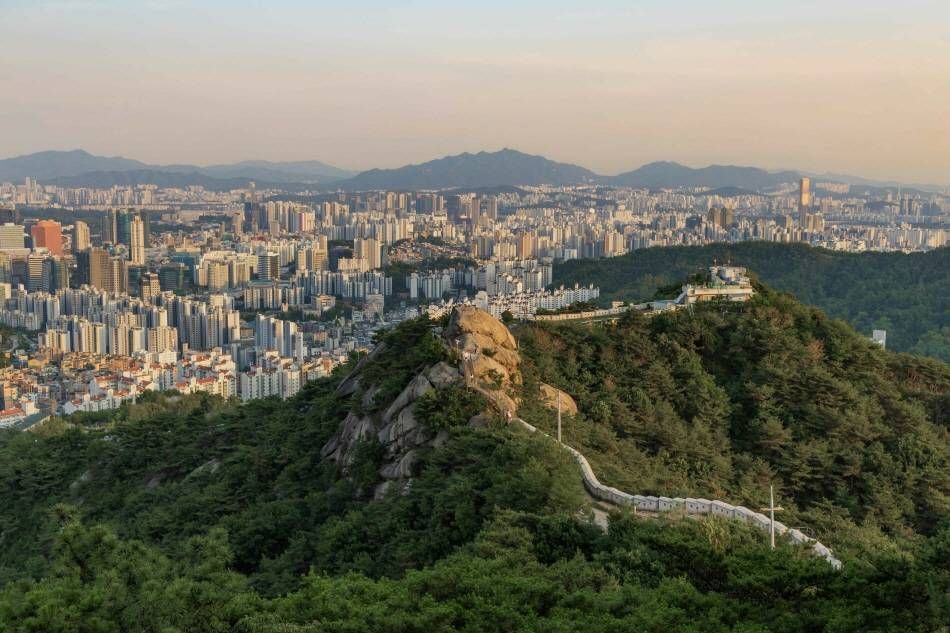
Views of Seoul from Inwangsan Mountain (Credit: Korea Tourism Organization Photo Korea – An Yeonggwan)

Summit of Inwangsan Mountain (Credit: Clip Art Korea)
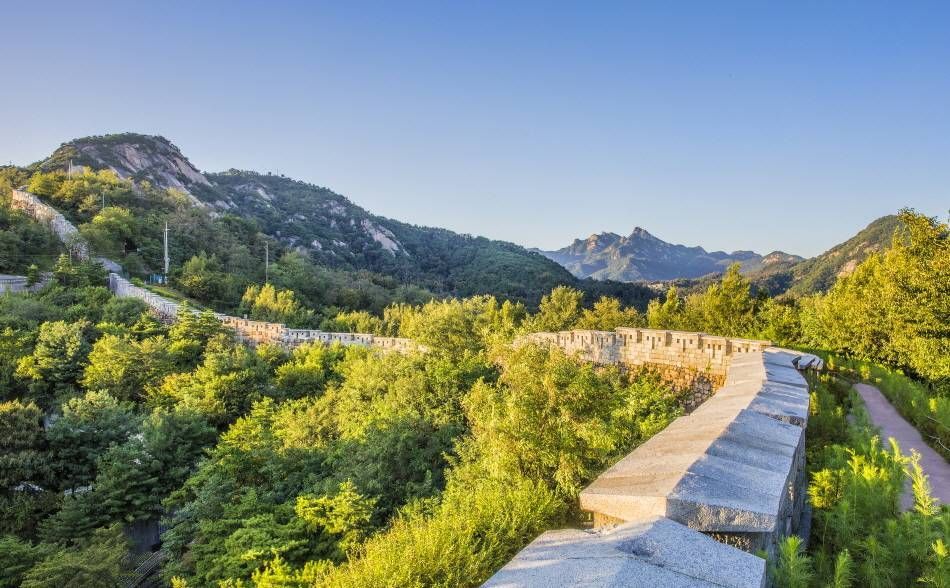
Old city wall stretching out along Inwangsan Mountain (Credit: Clip Art Korea)
Standing atop Inwangsan Mountain is like standing in the middle of Seoul due to its location in Jongno-gu, near the center of the city. The hiking trail even starts from the middle of the city, near Gyeongbokgung Station! The path is well maintained, and is short enough that even the most inexperienced hiker can reach the summit in no time. If you’re visiting with young children or someone who has walking difficulties, the Inwangsan Jarak Trail (2.5 km / 1 hr) that circles the mountain is a great choice.
- - Directions: Walk from Gyeongbokgung Station (Seoul Subway Line 3), Exit 1
- - Recommended course: Hanyangdoseong Trail + Inwangsan Jarak Trail (Sajikdan Altar – Beombawi Rock – Summit of Inwangsan Mountain – Suseongdong Valley)
- - Required time: Round-trip 2 hr (Trail distance 3.5 km)
2. Difficulty level: Moderate
With steep stairs and rocky paths, these moderate-level hikes take around three to four hours. They are ideal for those with basic fitness and some hiking experience, with no advance skills required.
| Cheonggyesan Mountain (618 m): Stairway to Heaven
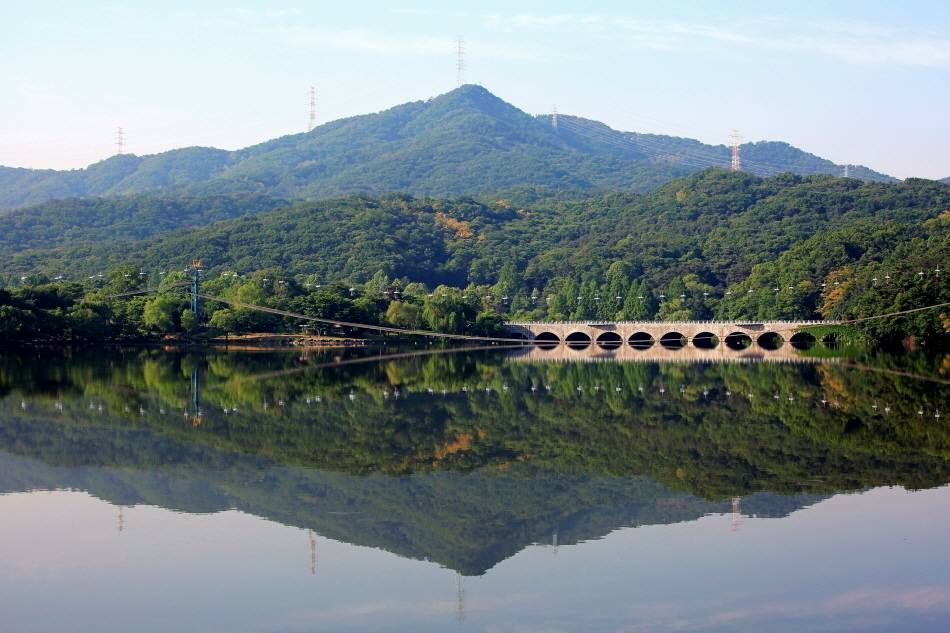
Seoul Grand Park nestled against Cheonggyesan Mountain (Credit: Getty Images Bank)

Forested trail in Forest Park at the entrance to Cheonggyesan Mountain (Credit: Getty Images Bank)
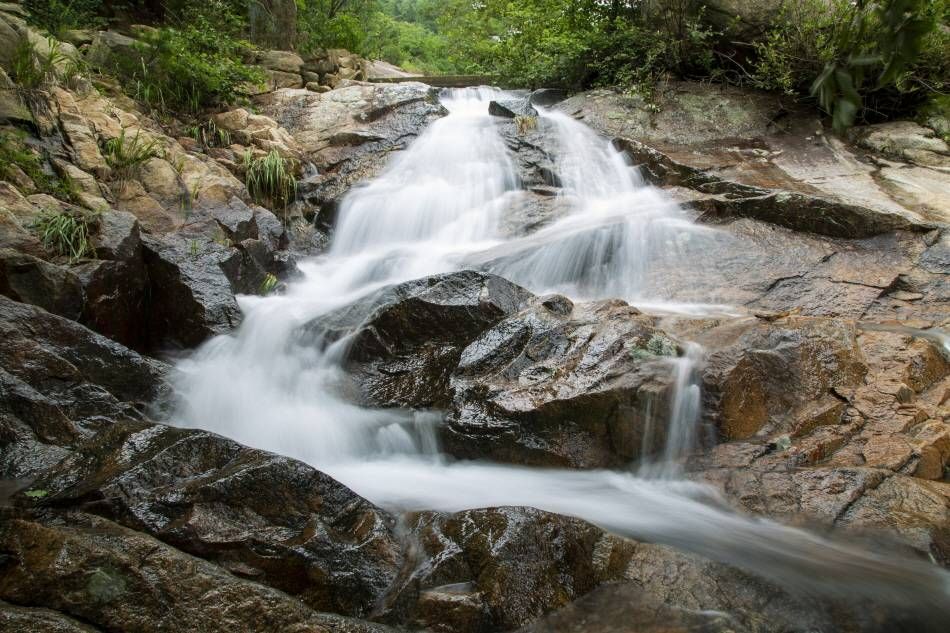
Clear stream flowing from Cheonggyesan Mountain in summer (Credit: Getty Images Bank)
Cheonggyesan Mountain is jokingly called “cheongaesan,” a Korean play on words in reference to the thousand (“cheon gae”) stairs you must climb to reach the summit. While there aren’t actually one thousand stairs, the mountain does seem to have an endless supply of them. Kkalddakgogae Pass in particular was named for the sharp sound of breathing you’ll produce after climbing up the steep staircase here. But if you can make it past that section, the summit will be just before you. During the summer months when it rains often, the sound of water babbling in the valley brook will keep you company.
- - Directions: Walk from Cheonggyesan Station (Seoul Subway Sinbundang Line), Exit 2
- - Recommended course: Seocho Course 1 + Seocho Course 2 (Wonteogol Entrance –– Kkalddakgogae Pass – Maebong Peak – Gilmajae Shelter – Wonteogol Entrance)
- - Required time: Round-trip 3 hr (Trail distance 5.2 km)
| Gwanaksan Mountain (632 m): Path of many ups and downs
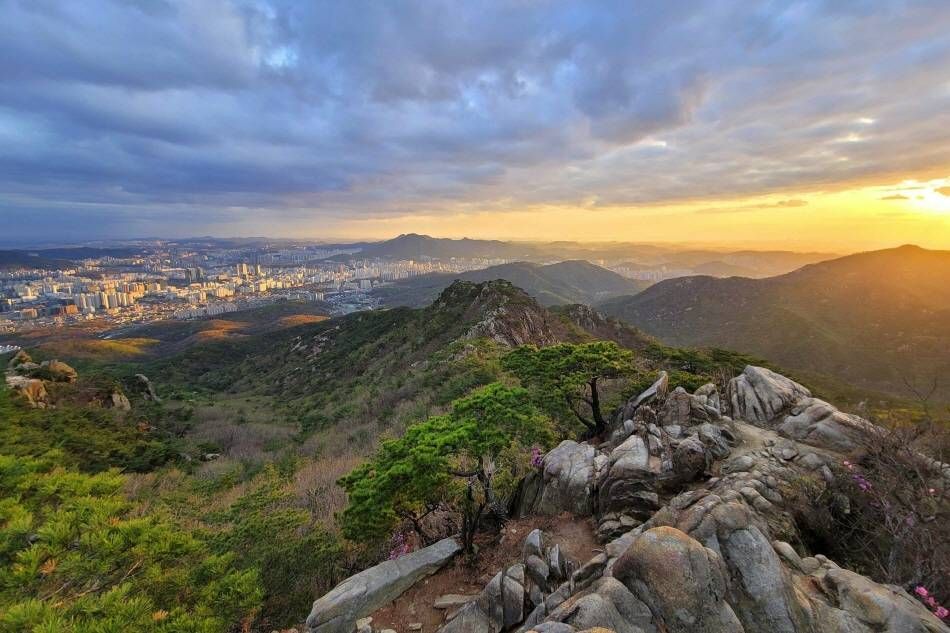
Sunrise from Gwanaksan Mountain (Credit: Korea Tourism Organization Photo Korea – Park Junga)
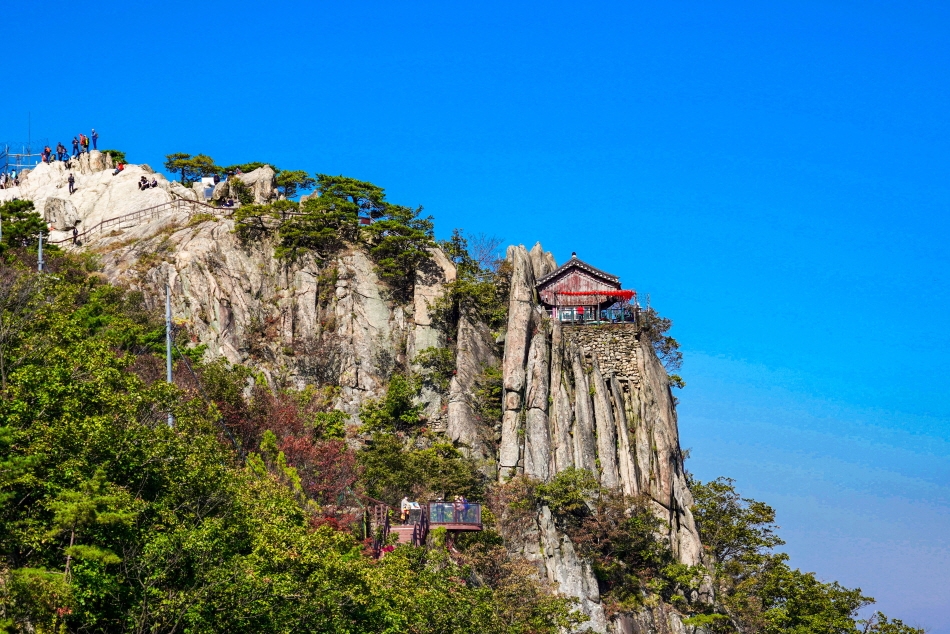
Yeonjudae Hermitage atop the highest peak of Gwanaksan Mountain (Credit: Clip Art Korea)

Weather station atop Gwanaksan Mountain (Credit: Clip Art Korea)
Gwanaksan Mountain isn’t that large in the grand scale of mountains, but it is quite a strenuous hike, requiring adequate warm-up before starting out. You’ll also want to be equipped with proper hiking boots. The trail begins with a rather flat walk, but quickly leads to repeated ups and downs as you follow the ridge line of this rocky mountain. Preparing gloves or hiking sticks can make your walk easier. If you enjoy an active lifestyle, you may even come to enjoy the roller-coaster-like walk.
- - Directions: Walk from Sadang Station (Seoul Subway Line 2), Exit 4
- - Recommended course: : Course 1 + Course 3 (Gwaneumsa Temple – Madangbawi Rock – Gwanakmun Gate – Yeonjudae Hermitage (summit) – Kkalddakgogae Pass – Seoul National Univ. Engineering Building 2
- - Required time: Round-trip 4 hr (Trail distance 6 km)
3. Difficulty level: Challenging
With steep slopes and rocky paths, these hiking courses are suitable for those with strong physical stamina and prior hiking experience. Certain sections may require proper hiking gear. Despite the demanding routes, completing these trails brings a rewarding sense of accomplishment.
| Dobongsan Mountain (740 m): Beautiful stone peaks
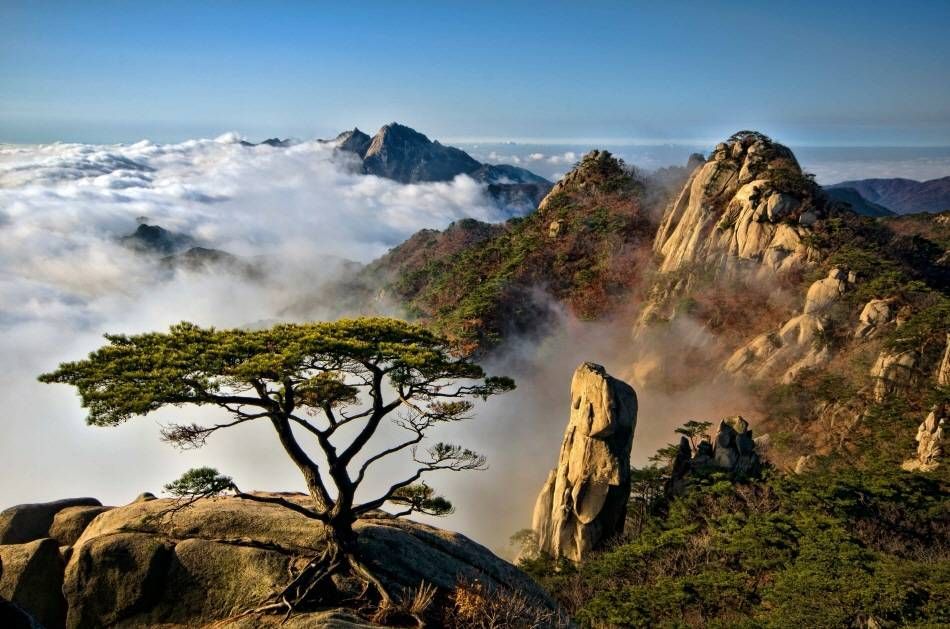
Rocky peaks of Dobongsan Mountain (Credit: Korea Tourism Organization Photo Korea – Song Gi-deok)
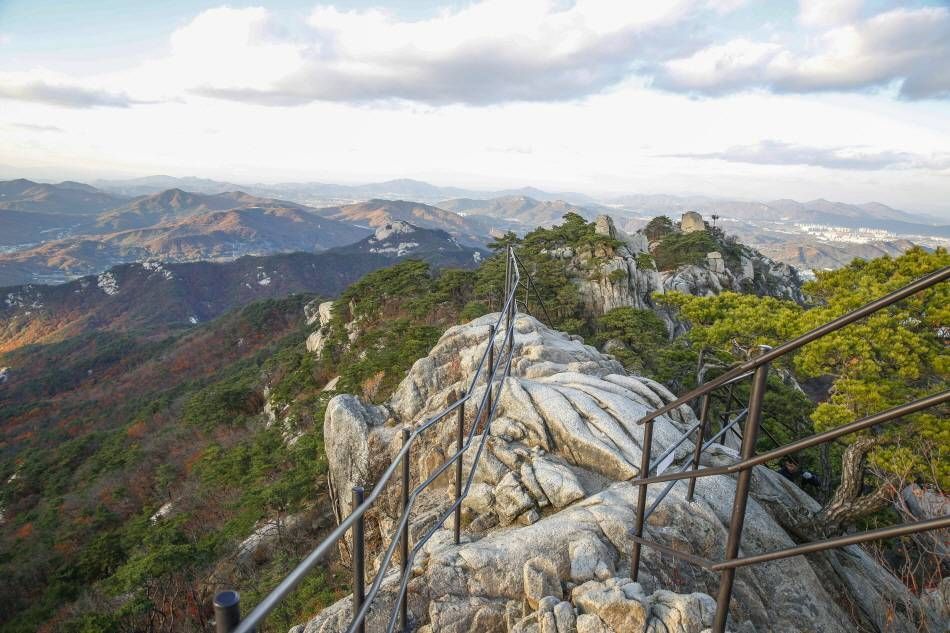
Summit of Dobongsan Mountain (Credit: Getty Images Bank)
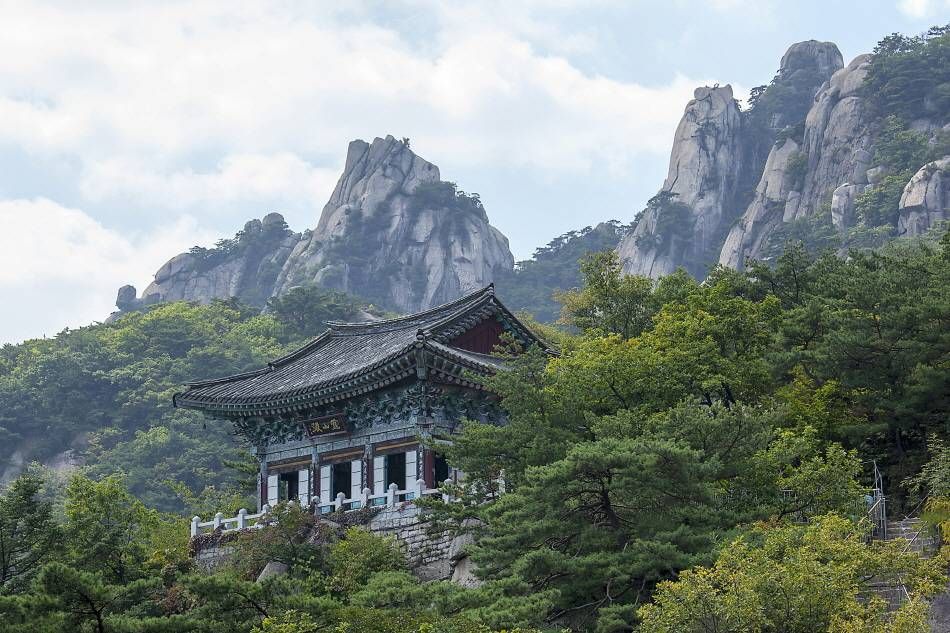
Mangwolsa Temple nestled among the rocky peaks (Credit: Clip Art Korea)
Dobongsan Mountain is located on Seoul’s northern side, bordering Uijeongbu and Yangju in Gyeonggi-do. The mountain stands out for its many rocky peaks, ranging from softly rounded to sharp points. While the mountain is smaller than Bukhansan Mountain, the highest mountain in Seoul, the rocky terrain makes it a much more difficult hike. Despite this, hikers often say the hardships at reaching the summit are all but forgotten when they take in the view from the majestic rocky peaks.
- - Directions: Walk from Dobongsan Station (Seoul Subway Line 1), Exit
- - Recommended course: Main Ridge Trail (Dobong Visitor Center – Bomunneungseon Ridge – Dobongjuneungseon Ridge – Sinseondae Peak – Podaeneungseon Ridge – Sapaeneungseon Ridge – Angol Park Ranger Post)
- - Required time: Round-trip 6 hr (Trail distance 9.8 km)
| Bukhansan Mountain (837 m): The most visited national park
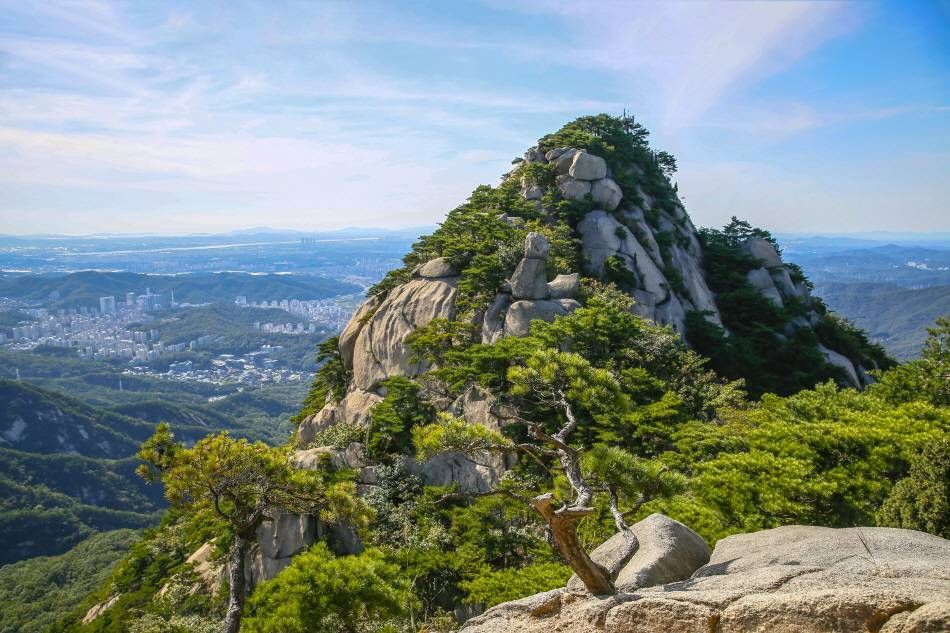
Yongchulbong Peak of Bukhansan Mountain (Credit: Clip Art Korea)
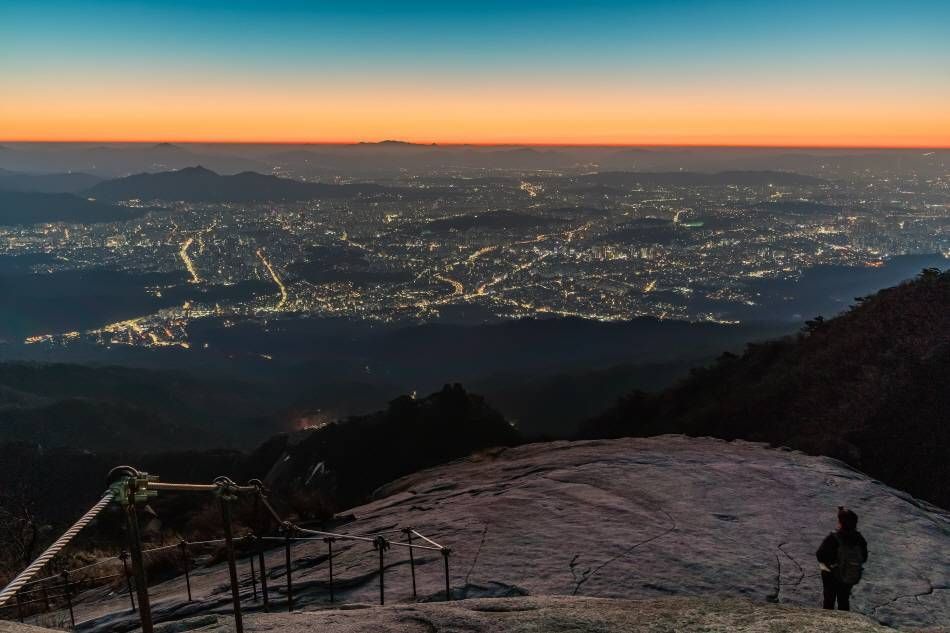
Sunrise from Bukhansan Mountain (Credit: DANIM 7th Gen. An Yeonggwan)
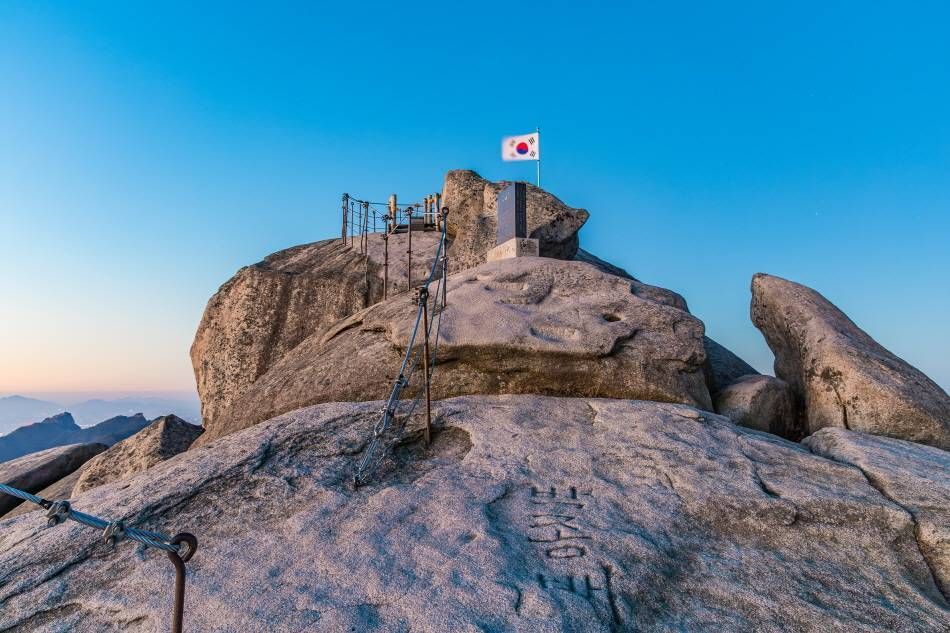
Baegundae Peak, the highest peak of Bukhansan Mountain (Credit: DANIM 7th Gen. An Yeonggwan)
Bukhansan Mountain, the highest mountain in Seoul, is one of the rare in-city national parks in the world. Well known for its views of Baegundae Peak, Insubong Peak, and Mangyeongdae Peak, the mountain offers various trails suitable for all levels, attracting everyone from beginner hikers to experts. As a national park, significant efforts are made to preserve its nature. Visitors can enjoy its peaceful valleys and cool off in its refreshing mountain streams.
- - Directions: Walk from Bukhansan Ui Station (Seoul Subway Ui-Sinseol Line), Exit 2
- - Recommended course: Baegundae Peak Course + Bukhansanseong Course (Baegun Visitor Center – Haroojae Pass – Baegundae Peak – Borisa Temple – Bukhansan Visitor Center)
- - Required time: Round-trip 6 hr 30 min (Trail distance 5.6 km)
✅ TIP. Ways to enjoy hiking like a local
POINT 1. Experience Korean hiking culture
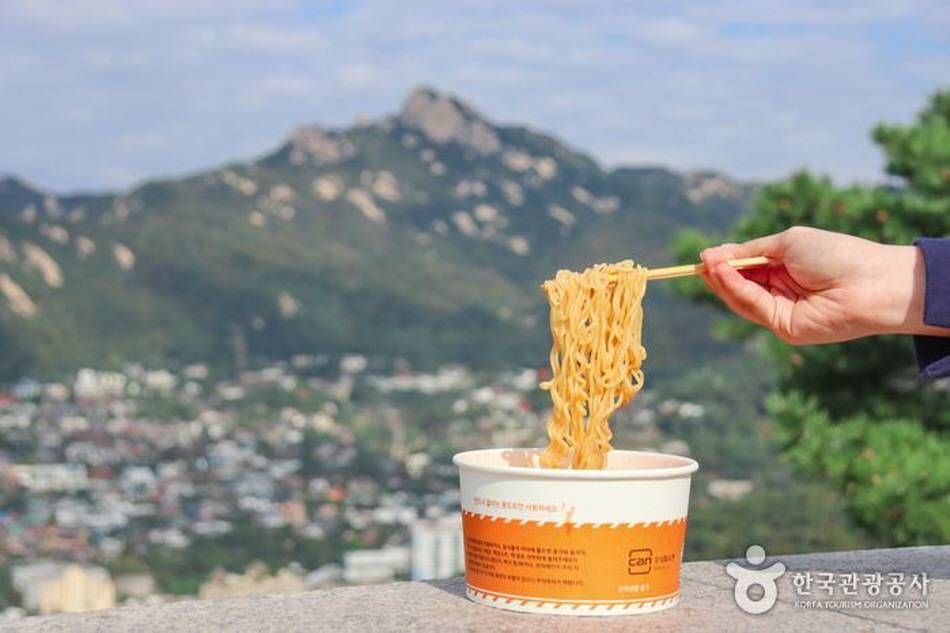
Energize with a cup of ramyeon during the hike
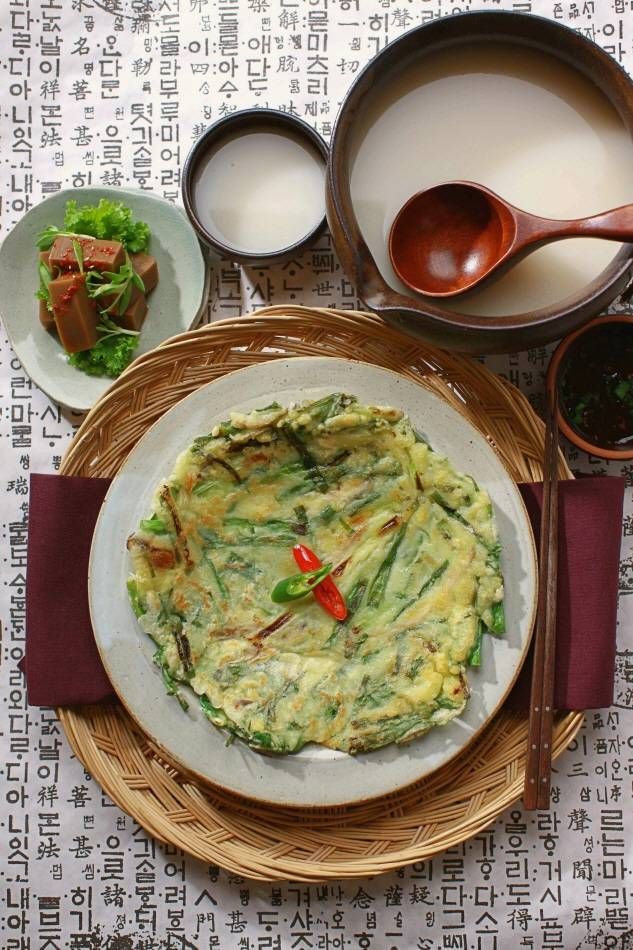
Pancake and unrefined rice wine after the hike (Credit: Korea Tourism Organization Photo Korea – Kim Jiho)
Don’t miss the long-standing Korean hiking tradition of eating gimbap and ramyeon at the top of mountain while enjoying the beautiful views. After completing your hike, try the classic combo of jeon (Korean pancake) with makgeolli (unrefined rice wine) to celebrate your accomplishment – a must-have experience to fully enjoy hiking the Korean way.
* Please dispose of your trash properly in a designated trash can
POINT 2. Make the most of Seoul Hiking Center
To make your hike easier and enjoyable, stop by the Seoul Hiking Center. Conveniently located at some popular trailheads, it offers visitors information about hiking and gear rentals such as hiking shoes, hiking clothing, stick, and gloves. It also offers amenities like a rest lounge, shower room, locker room, and fitting room, making hiking more convenient for international visitors.
- Bukhansan Center: 5F, 52 Samyang-ro 173-gil, Gangbuk-gu, Seoul (서울특별시 강북구 삼양로173길 52 광림빌딩 5층)
- Bugaksan Center: 1F, 88 Samcheong-ro, Jongno-gu, Seoul (서울특별시 종로구 삼청로 88 1층)
- Gwanaksan Center: Gwanaksan Station B1, 23 Sillim-ro, Gwanak-gu, Seoul (서울특별시 관악구 신림로 23 관악산역 지하1층)
- Website: seoulhiking.or.krPractice Hiking Safety
- - Select a course that matches your skill level
- - Check the weather report for your planned area in advance
- - Do some warm-up exercises before hiking
- - Stay on the designated paths
- - Do not pick or eat any wild plants or mushrooms
- - Descend slowly to protect your knees and ankles
- - Hike with a companion and check mountain location signs and national location number
- 1330 Korea Travel Helpline: +82-2-1330
- 1330 Text Chat: https://m.site.naver.com/1rEid
- (Korean, English, Japanese, Chinese, Russian, Vietnamese, Thai, and Indonesian)
* This column was last updated in June 2025, and therefore information may differ from what is presented here. We advise you to check for updates before visiting.





